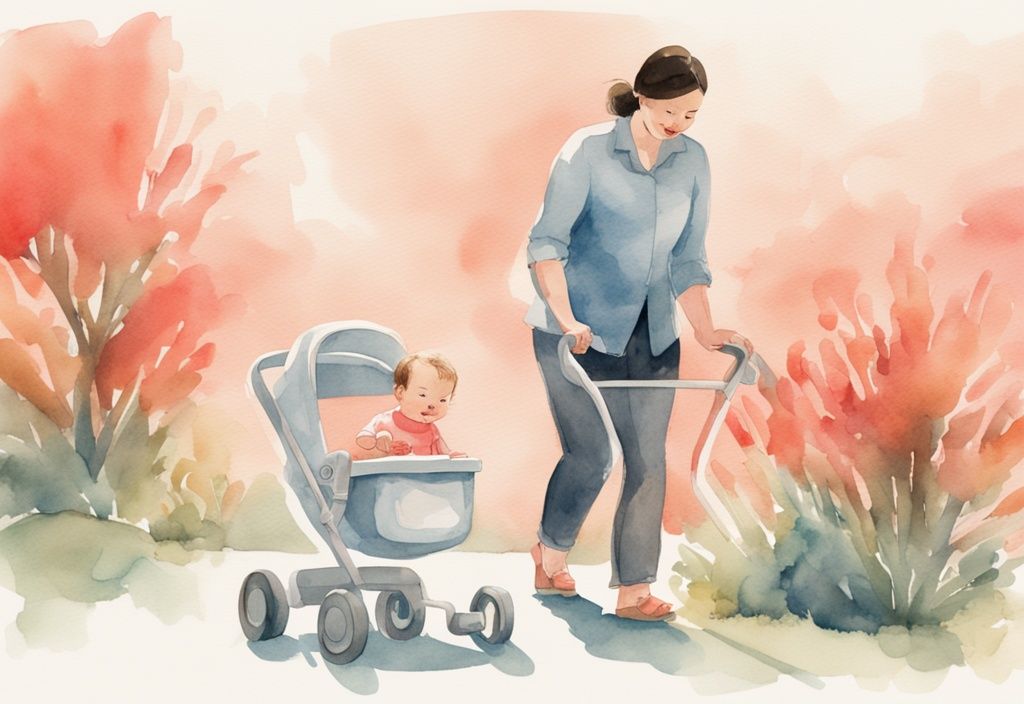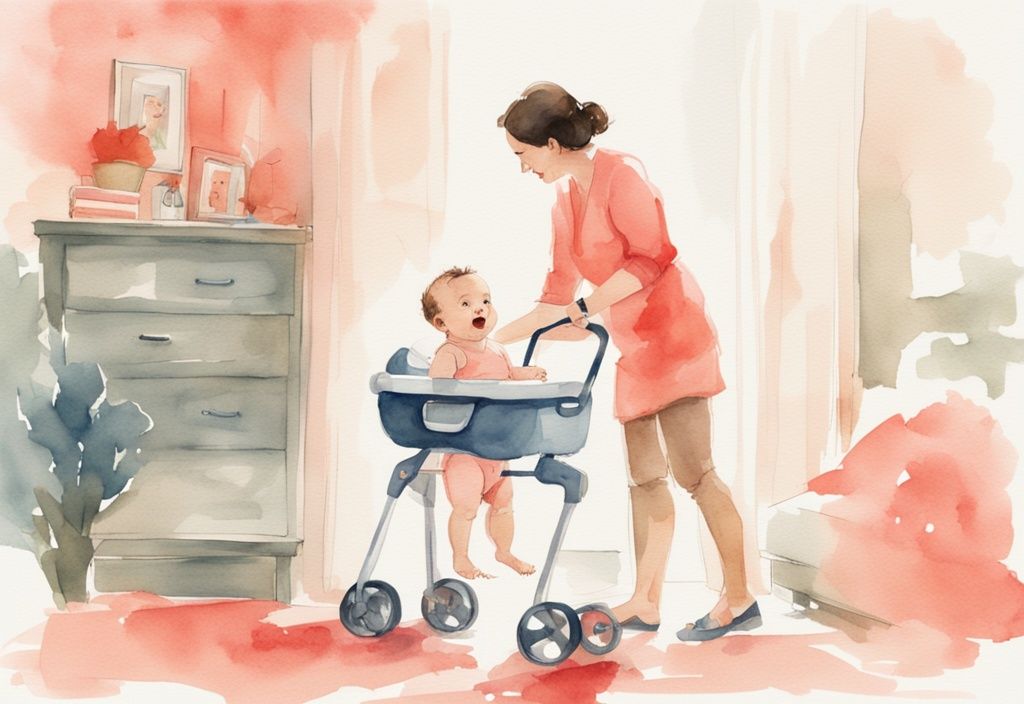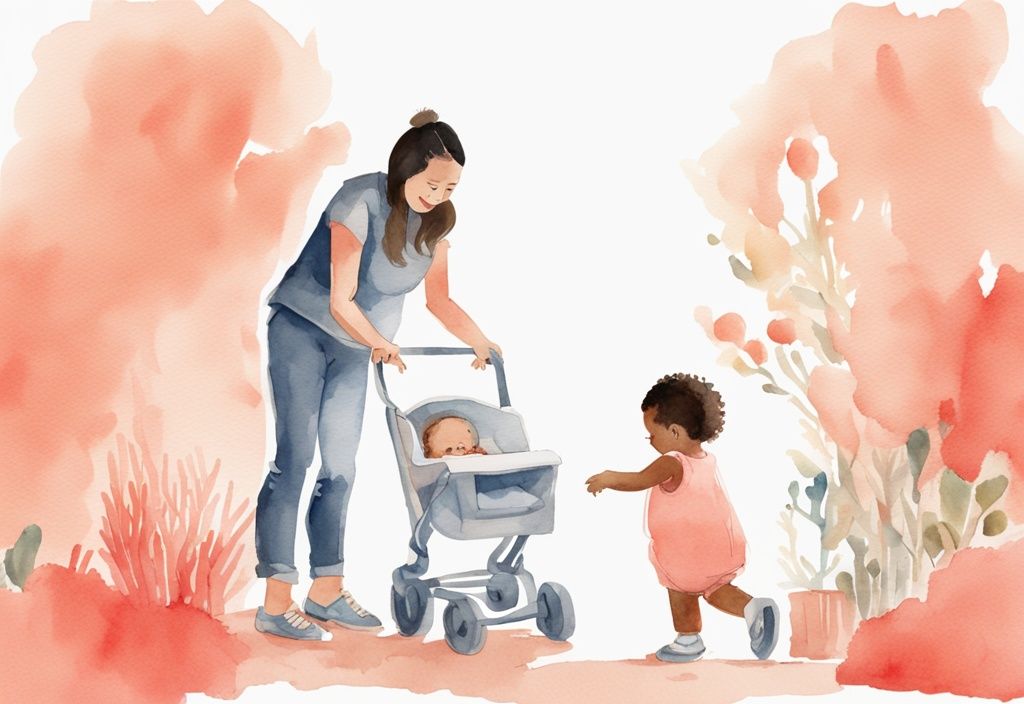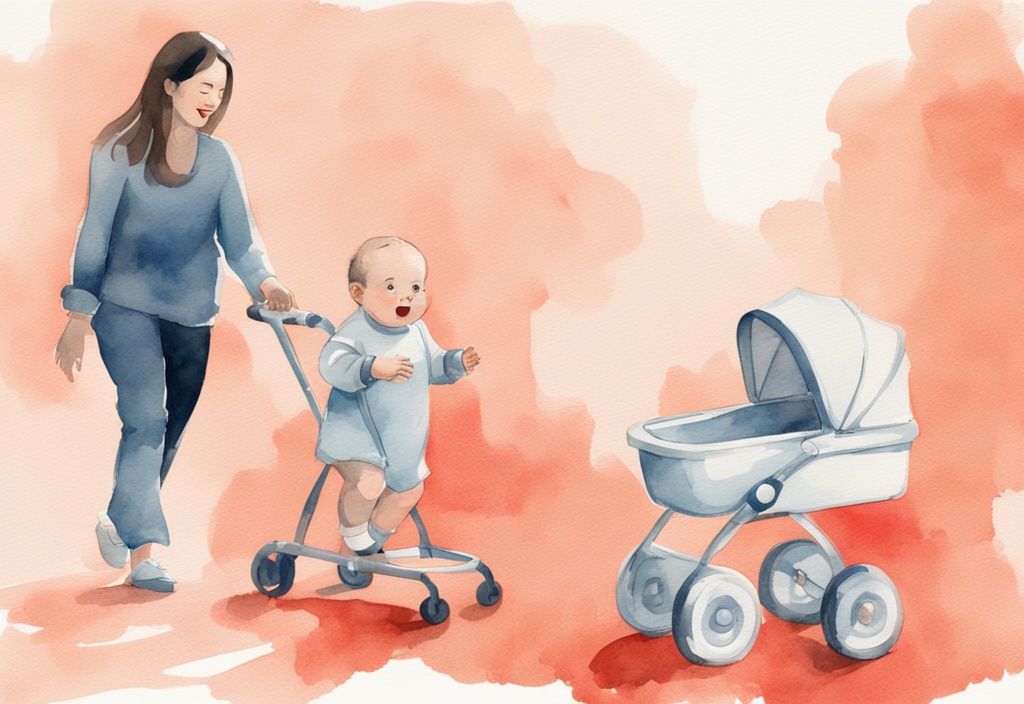Ever wondered when your little one can start using a baby walker? It’s a question that many of us parents grapple with. As a mother of two, I’ve been there, and I’m here to help you navigate this exciting milestone.
This guide will shed light on the developmental stages necessary for walker use, safety considerations, and expert advice. It’s crucial to understand the right time and conditions for introducing a walker to ensure your baby’s safety and development.
Whether you’re considering a walker or looking for alternatives, this article will provide the insights you need. Remember, every baby is unique, and it’s all about finding what works best for your little explorer and you. Let’s dive in, shall we?
When is the Right Time for a Baby to Use a Walker?
Deciding when a baby can use a walker is a journey that involves understanding their unique developmental milestones. It’s all about finding that sweet spot where your little one is ready to take on new adventures safely and confidently.
Understanding Age and Developmental Milestones
Figuring out when a baby can use a walker can feel like piecing together a delightful puzzle of growth. Generally, baby walkers are crafted for those adorable munchkins who haven’t yet taken their first steps, typically between 4 and 16 months old. Before you introduce a walker, make sure your baby can hold their head steady without any help—this is a big milestone often reached between 4 and 6 months. Most babies are ready to hop into a walker around 6 to 9 months, as this is when they can sit up all by themselves. Remember, every baby is unique, so consider your little one’s growth, size, and strength to ensure they’re ready for this exciting new experience.
Signs Your Baby is Ready for a Walker
Spotting the signs that your baby is ready for a walker can be a joyful part of parenting. First and foremost, your baby should be able to sit up independently and have good head control. When you place them in the walker, their tiny feet should comfortably touch the ground, giving them the chance to push off with their feet. If your baby shows a keen interest in exploring their surroundings and has the physical strength to move the walker, these are strong indicators they’re ready to use a walker. These signs are your assurance that your baby can safely and effectively use the walker to explore their environment.
Choosing the Right Baby Walker
Deciding when a baby can use a walker is a big step in their journey to mobility. It’s important to think about the types of walkers available and the safety features that will keep your little one secure. Let’s explore these aspects to help you make an informed choice.
Types of Baby Walkers
When pondering when can a baby use a walker, it’s crucial to know the variety out there. Traditional baby walkers, often featuring a cozy seat, a table for play, and a wide base with wheels, allow your baby to scoot around by pushing off the ground with their tiny feet. This design offers them a newfound sense of freedom. In Australia, these walkers must meet strict safety standards, including a reliable braking mechanism and clear safety instructions. These regulations are in place to ensure that walkers are safe for use, reducing any potential risks.
Safety Features to Look For
Safety is the top priority when figuring out when can a baby use a walker. Look for a walker that has an automatic stopping or gripping mechanism to prevent it from moving too quickly—no one wants any accidents! It’s also important to check that the walker fits snugly and can support your baby’s weight without any issues. Take a moment to inspect the walker for any sharp edges or parts that could pose a danger. Adhering to safety standards is vital, as it ensures the walker meets all necessary requirements, giving parents peace of mind.
Safety Concerns with Baby Walkers
Exploring the question of when can a baby use a walker brings us to a crucial conversation about safety. While these devices are designed to support mobility, they come with their own set of challenges and risks that every parent should consider.

Potential Hazards and Risks
As a mom who’s seen her fair share of toddler tumbles, I can tell you that baby walkers can be a bit of a double-edged sword. Sure, they might seem like a fun way for your little one to zoom around, but they can also lead to some pretty scary situations. One of the biggies? The dreaded staircase tumble. Walkers can zip along faster than you’d expect, making stairs a real danger zone.
Then there’s the issue of reach. In a walker, your curious explorer can suddenly grab things that were once safely out of reach—think electrical cords or that hot cup of coffee you just set down. Yikes! And let’s not forget about those pesky sharp corners or the potential for tipping over. It’s enough to make any parent’s heart skip a beat.
And here’s something I learned the hard way: prolonged use of walkers might not be doing those little legs any favors. Encouraging babies to scoot around on their toes can lead to improper leg development. So, when pondering when can a baby use a walker, it’s important to weigh these factors carefully.
Why Some Experts Advise Against Baby Walkers
Now, I know some of you might be wondering why there’s so much fuss about walkers. Well, experts like the American Academy of Pediatrics (AAP) have some pretty strong feelings about them, and for good reason. They’ve flagged these devices as a safety risk, and Canada even banned them back in 1989. Talk about taking a stand!
In places like Australia, walkers aren’t recommended either, mainly due to the risk of developmental delays. Research suggests that walkers don’t offer any real developmental benefits. Instead, they might actually mess with your baby’s natural motor development. It’s like giving them a head start they’re not quite ready for, which can throw off their natural walking progression.
So, when you’re thinking about when can a baby use a walker, it’s worth considering these insights. There are plenty of safer alternatives out there that can help your baby learn to walk at their own pace. Remember, every little step counts, and there’s no rush to the finish line!
Alternatives to Baby Walkers
Exploring alternatives to baby walkers can be a delightful journey. As parents, we often wonder when a baby can use a walker safely, but it’s equally important to consider other options that support your little one’s development. Let’s dive into some wonderful alternatives that can help your baby grow and thrive.
Activity Centers and Push Toys
When thinking about alternatives to baby walkers, activity centers and push toys are fantastic choices. Activity centers are like a mini wonderland for babies, with stationary, rotating, or bouncy seats. They offer a safe space where your baby can interact with their surroundings. These centers are packed with toys and activities that boost sensory development and cognitive skills.
On the flip side, push toys are perfect for those little adventurers eager to practice walking. They provide the support babies need as they push the toy forward, helping them develop balance and coordination—skills that are crucial for walking. Just a friendly reminder: keep a watchful eye when your baby is using push toys to prevent any tumbles or mishaps.
The Benefits of Tummy Time and Floor Play
Besides activity centers and push toys, don’t underestimate the power of tummy time and floor play in your baby’s routine. These activities are essential for building motor skills and muscle strength, setting the stage for crawling and walking. Tummy time encourages babies to lift their heads, strengthening their neck and shoulder muscles. Meanwhile, floor play lets them explore natural movement patterns.

Through these activities, your baby learns to balance and coordinate their movements—critical milestones before considering when a baby can use a walker. Regular tummy time and floor play ensure your little one develops the necessary skills for independent mobility. Remember, every giggle and wiggle is a step towards growing stronger and more confident!
Guidelines for Safe Walker Use
When pondering when can a baby use a walker, it’s essential to weave safety and supervision into every decision. Let’s explore how to create a secure environment for your little one.
Supervision and Environment Safety
As a mom of two, I know the whirlwind of emotions when your baby starts exploring the world. Walkers can be a fun tool, but safety is our top priority. Always have an adult nearby to keep an eye on your baby while they’re in the walker. This simple step can make a world of difference in preventing mishaps.
Now, let’s talk about the environment. Walkers and stairs? Not a good mix. Keep them far apart, and make sure any access to stairs is securely blocked. Also, steer clear of water bodies. Trust me, it’s better to be safe than sorry.
Creating a safe space is key. Clear away any sharp or jagged objects from the area where your baby will be using the walker. A flat surface is your best friend here, ensuring stability and peace of mind.
Here’s a friendly reminder: never leave your baby unattended in a walker. Even a quick dash to the kitchen can lead to unexpected adventures. And remember, walkers are for babies who can sit independently, but not for those who are already walking. It’s all about timing!
Lastly, let’s keep walker time short and sweet—no more than 15 minutes at a go. It’s a gentle way to ensure your baby’s safety while they enjoy their newfound mobility.
Parenting is a journey filled with joys and challenges. You’re doing great, and I’m here cheering you on every step of the way!
FAQ
Hey there, fellow parents! Navigating the world of baby walkers can be a bit confusing, can’t it? Let’s dive into some common questions about when a baby can use a walker and explore the ins and outs together.

Are baby walkers banned in certain countries?
Did you know that baby walkers have been banned in Canada since 1989? It’s all about keeping our little ones safe. In Australia, they aren’t banned, but experts don’t recommend them due to safety concerns and the potential for developmental delays. It’s always good to be informed, right?
Do baby walkers help with walking development?
Here’s the scoop: baby walkers might seem like a great idea, but they actually don’t help with walking development. In fact, they can delay progress. Babies need plenty of floor time to learn how to walk, and walkers can cut into that crucial time. Plus, they encourage toe-walking, which can tighten those little leg muscles and Achilles tendons. Let’s keep our babies moving naturally!
What are safer alternatives to baby walkers?
Looking for safer options? You’re in the right place! Consider activity centers with stationary or rotating seats. Sturdy wagons and push walking toys are fantastic, too. And don’t forget supervised tummy time—it’s a winner! These alternatives support natural movement and development without the risks associated with walkers. Let’s keep our kiddos safe and happy!
How long should a baby use a walker each day?
If you do decide to use a walker, it’s best to limit it to just 15 minutes a day. Make sure your little one can sit independently before hopping in, and stop using it once they start walking. It’s all about ensuring safety and supporting proper development. You’ve got this!
Conclusion
Navigating the question of when can a baby use a walker is a journey many parents embark on, often influenced by cultural beliefs and personal preferences. As a mom of two, I’ve seen firsthand how parents, including myself, often introduce baby walkers to their little ones between 3 to 12 months. This decision is usually fueled by the hope of sparking joy, encouraging those adorable first steps, and keeping our curious explorers entertained.
But let’s be real, the safety concerns are hard to ignore. For many of us, the thought of potential accidents and injuries is enough to give pause. Baby walkers, while fun, can indeed pose risks if not used with care. That’s why many pediatricians and researchers urge us to tread carefully. They recommend weighing the fun and developmental perks against the potential hazards until more conclusive studies shed light on their safety.
So, dear parent, as you consider when your baby might use a walker, remember to trust your instincts and gather all the information you can. It’s all about finding that sweet balance between safety and fun, and knowing you’re not alone in this parenting adventure.


